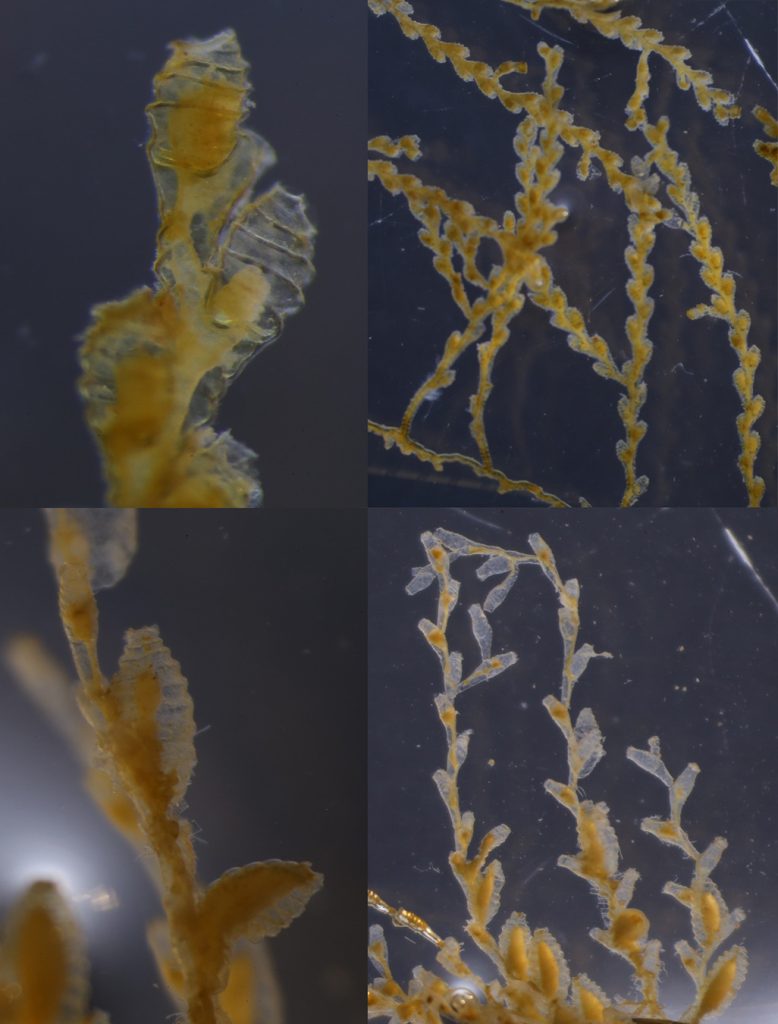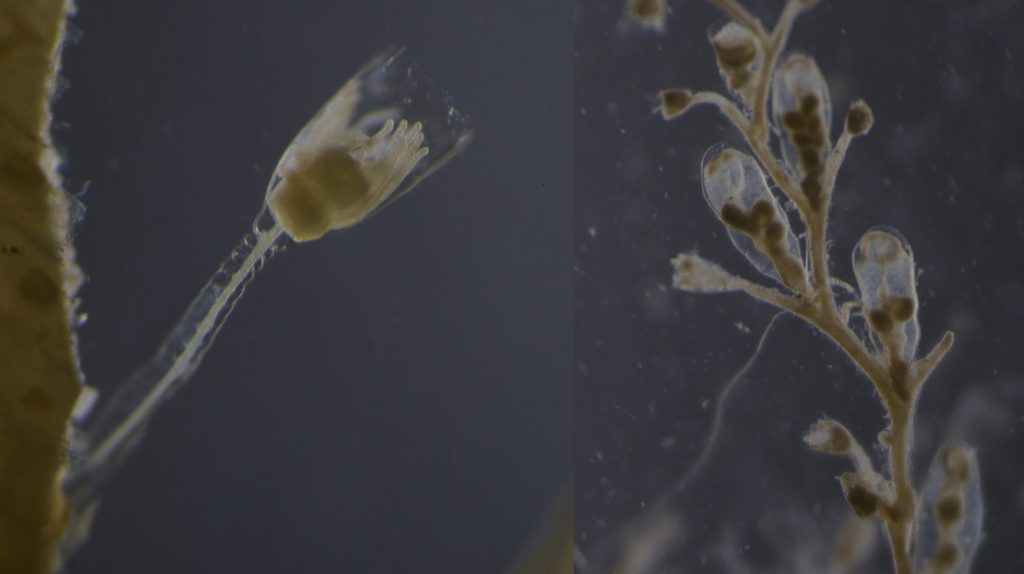On summer 2021 I had the opportunity to conduct a research visit at the University Museum of Bergen under project NorHydro. Concretely, I was working with the hydrozoan collections, where I got to know first-hand the role played by the curators and the importance of the collections. I examined several specimens and digitalized their associated data creating e-vouchers. Having all the information of specimens in a digital format is very important because it allows other researchers to access the material without having to come to the museum and helps to make the inventory more accessible and organised. I also improved my knowledge of hydrozoan diversity by identifying numerous specimens deposited at the museum. For that, I used some keys for both thecate and athecate hydroids from North—West European waters as well as the guidance of my MSc supervisor Luis Martell.
The main difference between leptothecate and anthoathecate hydroids is the lack of theca in the latter (the theca is a cup-like structure that protects the polyps), but some of them can be very tricky to identify since anthoathecate hydroids may have theca-like structures, and the theca of lepthothecate polyps may be difficult to see at first sight. Also, when you look at a sample, you may found several hydrozoans growing on the same substrate all together, making identification even more difficult. One of the characteristics used to differentiate species is the presence and the shape of the reproductive structures (gonophores), but they are not always present if the polyps are not reproductive.

Sertularella rugosa (top row) is without a doubt one of my favourite hydrozoans. The hydrothecae resemble a bee hive and the colony has a zig-zag appearance. However, it is easy to confuse it with Sertularella tenella (bottom row). Pictures credits: Carla García.

Polyps of the family Campanulariidae. This common family is characterized by the presence of a bell-shaped theca. Pictures credits: Carla García.
During my stay, I also had the chance to go sampling on a research boat, which helped me to understand better the procedures and requirements that are necessary to collect hydrozoans. We used a wide-mouthed plankton net that went up and down at a constant speed to avoid damaging the jellies and other gelatinous organisms from the plankton. After sampling, we took the cod-end to the laboratory. There, the content of the cod-end was poured on a light table. Then, we selected interesting specimens (including hydromedusae belonging to genus Euphysa) with wide mouthed pipettes and transferred them to Petri dishes filled with fresh seawater to observe them better under a microscope.

Towing the plankton-net which went down to 650m to capture some gelatinous organisms. As you can imagine, going up and down such a long distance takes a lot of time, but it is never boring with colleagues like Aino Hosia (right). Picture credits: Carla García.

I was lucky enough to get samples of Euphysa aurata and Euphysa sp., but they did not want to pose for my photo and kept moving around. Picture credits: Carla García.

We took the opportunity to collect some shallow-water benthic hydroids just in front of the Marine Station. Picture credit: Carla García.
Last but not least, I worked at the DNA lab, which allowed me to gain experience in new molecular techniques that I had not used before and to adapt myself to different (and very modern) facilities.
This experience has been simply great for me. I loved the working environment and the fact that everybody was always there to give me a hand. I have learned a lot and I am taking with me many friends that I hope to meet again when I come back to Bergen.
If you want to know more about projects of NorHydro and HYPNO, visit NorHydro’s home page and Facebook page, and check the hashtags #HYPNO and #NorHydro inTwitter.
-Carla García-Carrancio
